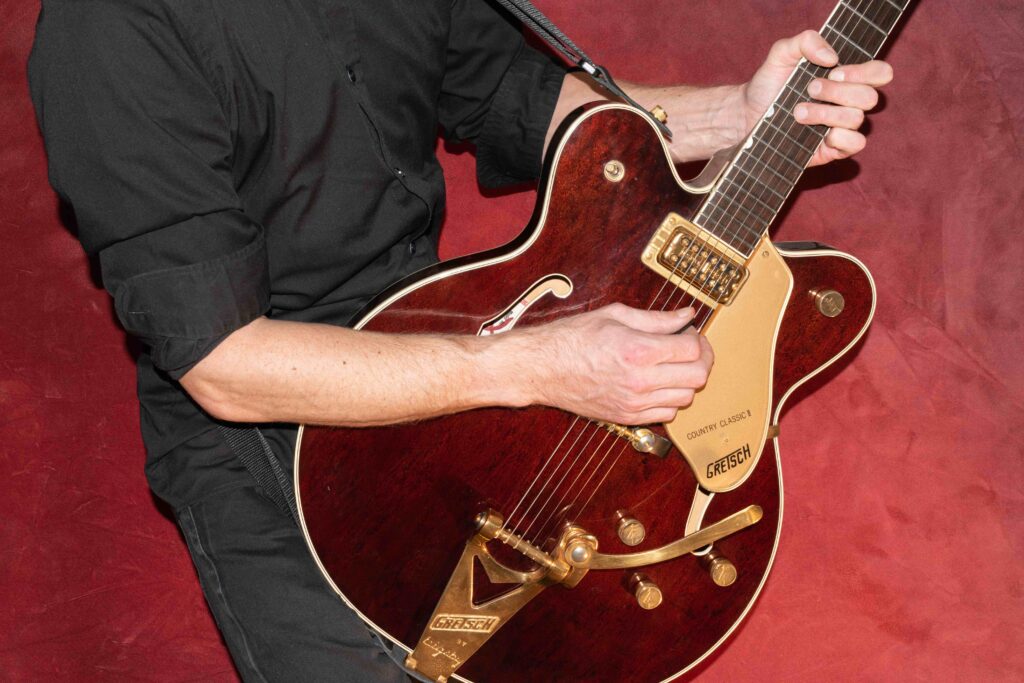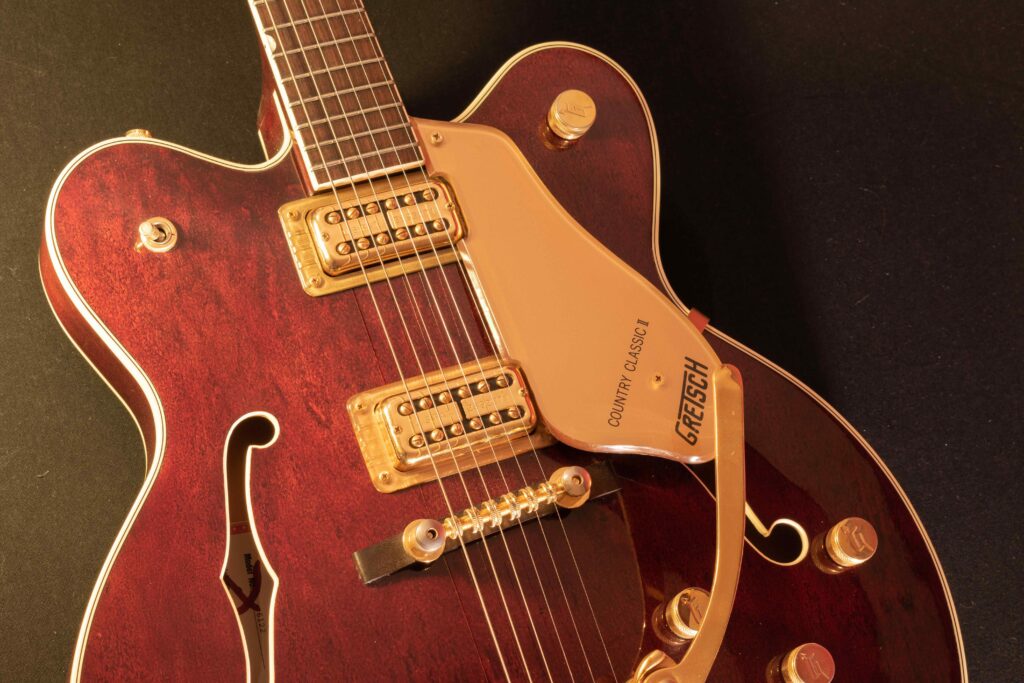
This article, “Mastering the Rockabilly Shuffle on Guitar: A Quick Guide”, was written for the GAK Blog by guest writer Gary Heimbauer on behalf of Guitar Tricks and 30 Day Singer.
Rockabilly, as the earliest style of Rock and Roll music, blends elements of both the blues and country music styles. One thing it has in common with the blues is its swing rhythms and the use of I-IV-V chord progressions that are often 12 bars in length.
Some ways that it may differ from the blues are faster tempos, and more major intervals in its riffs and chords, such as the major 6th interval!
I’d like to share with you a simple Rockabilly style shuffle riff that starts off sounding like it could be either blues or Rockabilly at level 1, but by the time we get to the final level, it will definitely have more of a rockabilly feel.
Level 1
At this level, we aren’t yet going to swing, because we’re only playing on the beat and on none of the upbeats. We can also start off at a slow tempo, just to get the structure down. As you can see, the chord progression goes like this:
E – E – E – E
A – A – E – E
B – B- E – E
If you would like to dig deeper into this subject, check out some online guitar lessons.
Level 2
For Level 2, we’re going to play each note twice, so we’ll be playing 1/8th notes, and we want to play them with a swing feel:
Level 3
For Level 3, we’re going to add a few passing tones, that will really change the vibe:
Now for the final level, we want to try to palm mute the entire thing and play it at a much faster tempo. With those two elements added, it will really sound like Rockabilly! If you have an electric guitar, try to also add a little bit of slapback delay.
Delay effects pedals like the Electro-Harmonix Slap-Back Echo Pedal or Fender Hammertone Delay deliver perfect rockabilly tones at an affordable price point.
This is where there is an immediate repeat after each note, and it’s very prominent when you do palm muting as you can hear the effect better!

Conclusion
In conclusion, the beauty of Rockabilly guitar playing lies in its vibrant fusion of blues’ soulfulness and country’s upbeat energy. Transitioning from the foundational I-IV-V progression to incorporating swing rhythms and major intervals gradually infuses that distinct Rockabilly vibe.
By delving into this multi-levelled approach, from steady beats to the intricate nuances of palm muting and slapback delay, guitarists can truly embrace and embody the spirit of early rock and roll.
Whether you’re a beginner or an advanced player, experimenting with these Rockabilly techniques is not only a journey through musical history but a testament to the enduring allure of the Rockabilly genre. So, grab your guitar, let that rhythm flow, and let the rich legacy of Rockabilly sweep you off your feet!